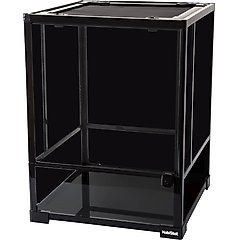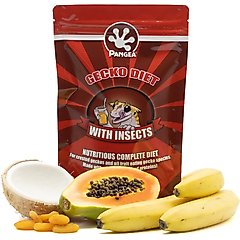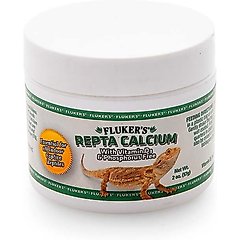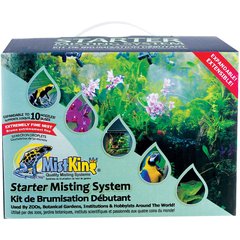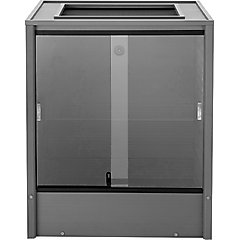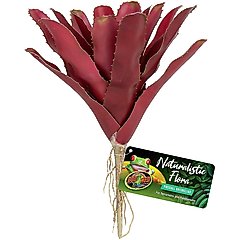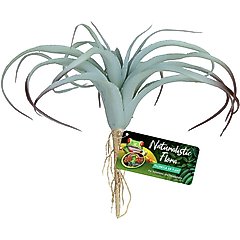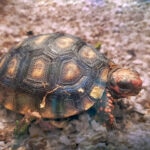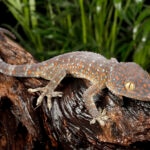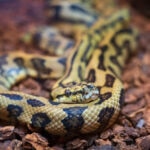Crested Gecko Care Sheet

Photo by andriy romagnoli revenko/iStock/Getty Images Plus
Crested geckos have friendly and peaceful personalities. These reptiles are one of the best lizards to keep as pets, and they’re known for the fringe-like crest that runs from the top of their heads down their bodies.
If you’re thinking about adopting a crested gecko for the first time, ensure you have everything you need to care for your new pet.
Key Takeaways
- Handle crested geckos gently. Rough handling could cause their tail to break off.
- They are most active at night, so don’t be surprised if you see them staying secluded during the day.
- As powerful jumpers, they closely resemble frogs, using their hind legs and flexible toes.
Fun Facts
- Crested geckos don’t have eyelids, and they use their tongues to clean and rehydrate their eyeballs.
- Unlike other reptiles and geckos, their tails don’t regrow when they fall off.
- Adult-sized crested geckos average 5–8 inches long and reach adulthood within 12–24 months.
Habitat
Adult crested geckos need a tank that’s at least 20 gallons, with the height of the enclosure more important than the width. Crested geckos love to climb and jump, so taller habitats are better for their living spaces. Consider the Habistat Arboreal Terrarium as a great option.
Recommended Product
You’ll need to increase your crested gecko’s habitat as they grow. These reptiles will reach full adult size—up to 8 inches in length—when they are 12–24 months old. Keep a screened lid on your enclosure for ventilation and to prevent escape.
Put a thermal gradient in the enclosure so crested geckos can warm up and cool down as needed. Keep warmer temperatures around 72 to 75 degrees F, while cooler temperatures should stay between 68 and 75 degrees F.
If your enclosure reaches 80 degrees or higher it could endanger your crestie; they are quite sensitive to higher temperatures.
While a low-wattage UVB should be enough to heat your crested gecko’s habitat, don’t place bulbs—especially heat bulbs—too close to the top of the tank. Crested geckos are curious and might get burned. If your habitat does need to be warmer, use ceramic heat emitters.
Spot clean regularly by removing old food and soiled material. Clean food and water dishes between feedings and disinfect their habitat at least once a week.
Housing multiple crested geckos together takes some extra planning. Two males shouldn’t be housed in the same habitat with a female, as the males will fight over the female.
Housing two males together should be OK if there’s no female, but they could become territorial, so make sure habitats have plenty of room and space for both.
Avoid keeping a male and female together unless you want your crested geckos to start mating. When introducing a new gecko to the other, monitor them closely to see if they’re compatible. Avoid putting different reptiles in the same habitat.
Diet
Crested geckos are omnivores, meaning they eat both plants and protein. Crested geckos should eat commercial powdered food every evening. Pangea is a great brand that offers a wide variety of flavors! Just mix the food with water right before feeding.
Recommended Product
Offer gut-loaded insects one or two times a week as a treat before mealtime, dusting them with a calcium supplement that includes vitamin D such as the Fluker’s Calcium with Vitamin D3 Indoor Reptile Supplement. Dust the treats with a multivitamin supplement powder once a month.
Recommended Products
Vary the type of insects you feed your crested gecko and watch them during feeding time to make sure all food gets eaten. Remove the stragglers after 30 minutes, as the insects could cause harm or stress to your crested gecko.
Keep fresh, clean water available every day in water dishes, although they prefer to lick water droplets off leaves and other surfaces to drink. Use an automatic mister or a hand mister to provide daily hydration.
Recommended Products
Handling
Always wash your hands before and after you gently handle your crested gecko. Carefully handle crested geckos near ground level or over soft surfaces. These reptiles may try to leap and you’ll want to minimize injuries through falls. Don’t grab your crested gecko by their tail. If they lose their tail, it doesn’t grow back.
When you bring your crested gecko home, limit handling as they get used to their new environment. Too much handling can cause stress, and you’ll want to encourage your crested gecko to feel safe and secure. Also limit handling when they’re shedding, as they are easily annoyed around this time.
Health
Watch your crested gecko regularly to make sure they stay in good health. A healthy crested gecko has:
- Clean, clear eyes
- Clean ears with no visible swelling
- An alert personality and shows appropriate basking behavior
- A clean vent
- A good body condition with no visible swelling or bumps
Your crested gecko should visit the veterinarian every year for their annual checkup. Transport them using a food storage container or another plastic container with air holes. There might be cause for concern to call your vet if you notice:
- Swollen eyes, discharge around the eyes, or eyes that are stuck shut
- Swelling around the ears
- Lumps, bumps, or a sunken belly
- Rapid muscle loss in the back or tail or a thin tail with hips protruding
- Refusing food or not basking
- Pink ulcerations or other lesions
- Shedding is stuck (dysecdysis)
- Lethargy or can’t move normally
Supply Checklist
Make sure you have enough supplies on hand before you bring your crested gecko home, including:
- A large enough habitat based on their size
Recommended Product
- A substrate—or bedding—with sphagnum moss and plants
- Commercial crested gecko food and dish
Recommended Product
- Insect food, keeper, and quencher
- A water dish large enough to soak in
- Calcium and multivitamin supplements
- Thermometer and hygrometer (humidity gauge)
- Climbing decor and a hideaway place
Recommended Products
FAQs
Do crested geckos like being held?
Crested geckos may not like being held when you first bring them home. Try holding them in their cage for a few minutes at first and keep them very low to the ground. With time, they may learn to like being held.
Is a crested gecko a good pet?
The crested gecko is great for beginner reptile enthusiasts. Remember that all pets require some maintenance and work, but the crested gecko is a good option if you want a small, gentle creature.
Should I get one or two crested geckos?
Avoid keeping two crested geckos together unless you plan on mating them. If you have two male crested geckos, each should have their own enclosure since they can get territorial. While two females can live together, it’s not ideal and the best option is to keep each one separate.
Click here for a PDF version of this care sheet!
